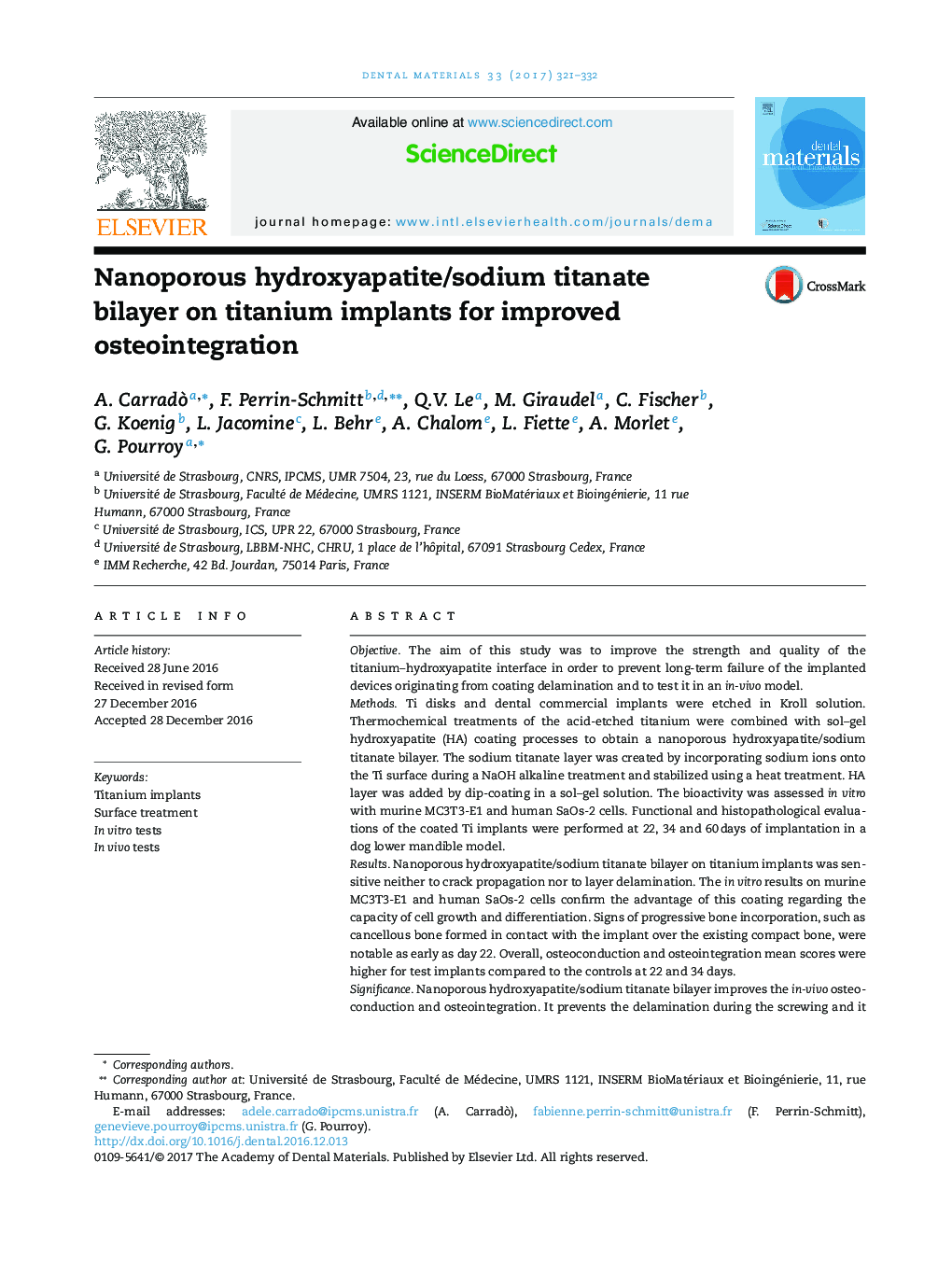| کد مقاله | کد نشریه | سال انتشار | مقاله انگلیسی | نسخه تمام متن |
|---|---|---|---|---|
| 5432991 | 1398051 | 2017 | 12 صفحه PDF | دانلود رایگان |

ObjectiveThe aim of this study was to improve the strength and quality of the titanium-hydroxyapatite interface in order to prevent long-term failure of the implanted devices originating from coating delamination and to test it in an in-vivo model.MethodsTi disks and dental commercial implants were etched in Kroll solution. Thermochemical treatments of the acid-etched titanium were combined with sol-gel hydroxyapatite (HA) coating processes to obtain a nanoporous hydroxyapatite/sodium titanate bilayer. The sodium titanate layer was created by incorporating sodium ions onto the Ti surface during a NaOH alkaline treatment and stabilized using a heat treatment. HA layer was added by dip-coating in a sol-gel solution. The bioactivity was assessed in vitro with murine MC3T3-E1 and human SaOs-2 cells. Functional and histopathological evaluations of the coated Ti implants were performed at 22, 34 and 60Â days of implantation in a dog lower mandible model.ResultsNanoporous hydroxyapatite/sodium titanate bilayer on titanium implants was sensitive neither to crack propagation nor to layer delamination. The in vitro results on murine MC3T3-E1 and human SaOs-2 cells confirm the advantage of this coating regarding the capacity of cell growth and differentiation. Signs of progressive bone incorporation, such as cancellous bone formed in contact with the implant over the existing compact bone, were notable as early as day 22. Overall, osteoconduction and osteointegration mean scores were higher for test implants compared to the controls at 22 and 34 days.SignificanceNanoporous hydroxyapatite/sodium titanate bilayer improves the in-vivo osteoconduction and osteointegration. It prevents the delamination during the screwing and it could increase HA-coated dental implant stability without adhesive failures. The combination of thermochemical treatments with dip coating is a low-cost strategy.
Journal: Dental Materials - Volume 33, Issue 3, March 2017, Pages 321-332